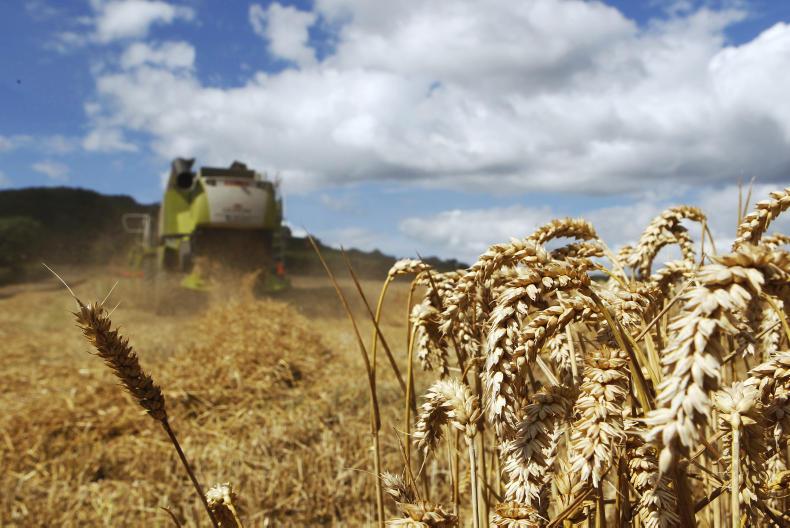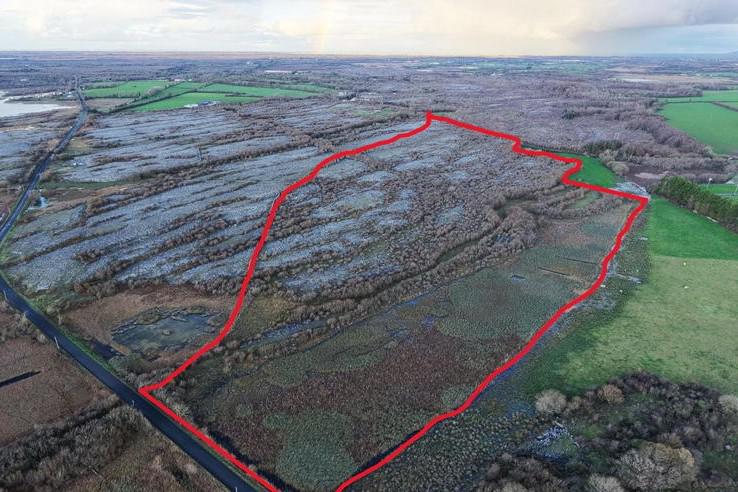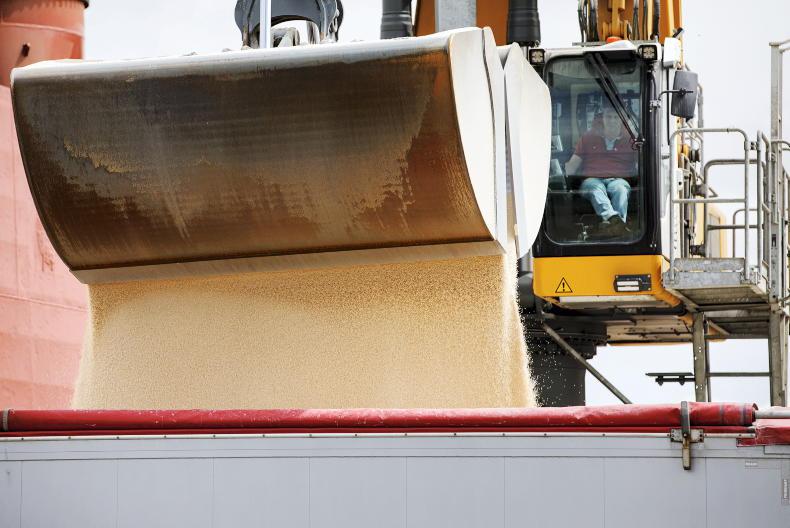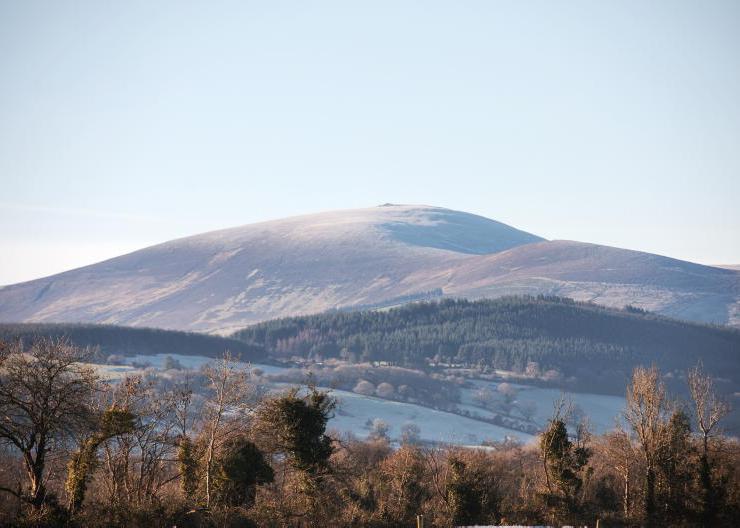The carbon footprint of tillage farming is approximately 1.2 t of CO2 equivalent (CO2e) per hectare.
This footprint is just 14% of the estimated carbon emissions per hectare for an average dairy system, and about 30% of the emissions per hectare for a typical beef enterprise.
The comparison was made using IPCC methodology in the newly published Tillage Industry Ireland report. The report examines the economic impact of the tillage sector on the Irish economy.
It details how tillage has zero methane emissions per hectare and it has relatively low emissions per hectare of carbon dioxide and nitrous oxide.
Move to dairying
In tillage areas, there has been a notable shift in land use towards dairy production since the removal of milk quotas.
The report indicates that for every 100ha of tillage switched to an ‘average’ dairy system, greenhouse gas (GHG) emissions would increase by about 740t of CO2e.

Emissions of methane (CH4) from enteric fermentation and manure management are the dominant dairy GHG sources.
It outlines how much of the 57,400ha of land which was taken out of tillage production over the past decade is now devoted to milk production.
This change in land use would correspond to an increase in GHG emissions of 425,000t of CO2e per annum.
The report indicates how the drift of land from tillage into milk production will likely affect Ireland’s ability to meet its climate targets.
Tillage emissions
As Table 1 outlines, GHG emissions from tillage comprises largely of direct and indirect nitrous oxide (N2O) from soils through fertiliser application and crop residues, and CO2 from the application of lime and urea.
Direct emissions from applications of synthetic nitrogen and lime accounted for 73% of CO2e from tillage. The remaining emissions comprised of N2O from crop residues (20.5%) and indirect N2O emissions (6.5%) from atmospheric deposition and leaching/run-off.

Applications of synthetic nitrogen and lime accounted for 73% of CO2e from the tillage sector.
In the case of bovine systems, emissions of methane (CH4) from enteric fermentation and manure management were the dominant GHG sources, accounting for around three-quarters of their CO2e.
Excluding fuel consumption, emissions from the tillage system amounted to approximately 1.2t of CO2e per hectare.
Including fuel usage, emissions from the tillage system increased to almost 1.6t of CO2e per hectare.
Tillage fuel usage per hectare was similar to that of dairy, although somewhat higher than the levels estimated for the beef systems. However, the relative positions of the systems in terms of CO2e per hectare were broadly unaltered when fuel-related emissions were included, the report explains.
National targets
The Climate Change Advisory Council (CCAC) noted that annual agriculture emissions increased by 6.9% between 2014 and 2017 and were projected to increase further because of the continuing expansion of the national dairy herd.
The CCAC suggested that the reduction of the national suckler cow herd could be a ‘cost-effective contribution to mitigation in the agricultural sector.
CCAC (2019) did not refer to the potential role of tillage production as part of Ireland’s climate actions.

Tillage has a key role to play in meeting our emission reduction targets.
As a result, the report suggests that maintenance of a vibrant cropping sector has a key role to play in cost-effective emissions reduction in agriculture due to its lower carbon footprint compared to bovine enterprises.
Commenting on the sector, report author agricultural economist Professor Michael Wallace of UCD said: “Tillage activities have strong environmental and biodiversity credentials, particularly in comparison with dairying and other drystock activities.”
A full copy of the report can be found here.
The carbon footprint of tillage farming is approximately 1.2 t of CO2 equivalent (CO2e) per hectare.
This footprint is just 14% of the estimated carbon emissions per hectare for an average dairy system, and about 30% of the emissions per hectare for a typical beef enterprise.
The comparison was made using IPCC methodology in the newly published Tillage Industry Ireland report. The report examines the economic impact of the tillage sector on the Irish economy.
It details how tillage has zero methane emissions per hectare and it has relatively low emissions per hectare of carbon dioxide and nitrous oxide.
Move to dairying
In tillage areas, there has been a notable shift in land use towards dairy production since the removal of milk quotas.
The report indicates that for every 100ha of tillage switched to an ‘average’ dairy system, greenhouse gas (GHG) emissions would increase by about 740t of CO2e.

Emissions of methane (CH4) from enteric fermentation and manure management are the dominant dairy GHG sources.
It outlines how much of the 57,400ha of land which was taken out of tillage production over the past decade is now devoted to milk production.
This change in land use would correspond to an increase in GHG emissions of 425,000t of CO2e per annum.
The report indicates how the drift of land from tillage into milk production will likely affect Ireland’s ability to meet its climate targets.
Tillage emissions
As Table 1 outlines, GHG emissions from tillage comprises largely of direct and indirect nitrous oxide (N2O) from soils through fertiliser application and crop residues, and CO2 from the application of lime and urea.
Direct emissions from applications of synthetic nitrogen and lime accounted for 73% of CO2e from tillage. The remaining emissions comprised of N2O from crop residues (20.5%) and indirect N2O emissions (6.5%) from atmospheric deposition and leaching/run-off.

Applications of synthetic nitrogen and lime accounted for 73% of CO2e from the tillage sector.
In the case of bovine systems, emissions of methane (CH4) from enteric fermentation and manure management were the dominant GHG sources, accounting for around three-quarters of their CO2e.
Excluding fuel consumption, emissions from the tillage system amounted to approximately 1.2t of CO2e per hectare.
Including fuel usage, emissions from the tillage system increased to almost 1.6t of CO2e per hectare.
Tillage fuel usage per hectare was similar to that of dairy, although somewhat higher than the levels estimated for the beef systems. However, the relative positions of the systems in terms of CO2e per hectare were broadly unaltered when fuel-related emissions were included, the report explains.
National targets
The Climate Change Advisory Council (CCAC) noted that annual agriculture emissions increased by 6.9% between 2014 and 2017 and were projected to increase further because of the continuing expansion of the national dairy herd.
The CCAC suggested that the reduction of the national suckler cow herd could be a ‘cost-effective contribution to mitigation in the agricultural sector.
CCAC (2019) did not refer to the potential role of tillage production as part of Ireland’s climate actions.

Tillage has a key role to play in meeting our emission reduction targets.
As a result, the report suggests that maintenance of a vibrant cropping sector has a key role to play in cost-effective emissions reduction in agriculture due to its lower carbon footprint compared to bovine enterprises.
Commenting on the sector, report author agricultural economist Professor Michael Wallace of UCD said: “Tillage activities have strong environmental and biodiversity credentials, particularly in comparison with dairying and other drystock activities.”
A full copy of the report can be found here.













SHARING OPTIONS